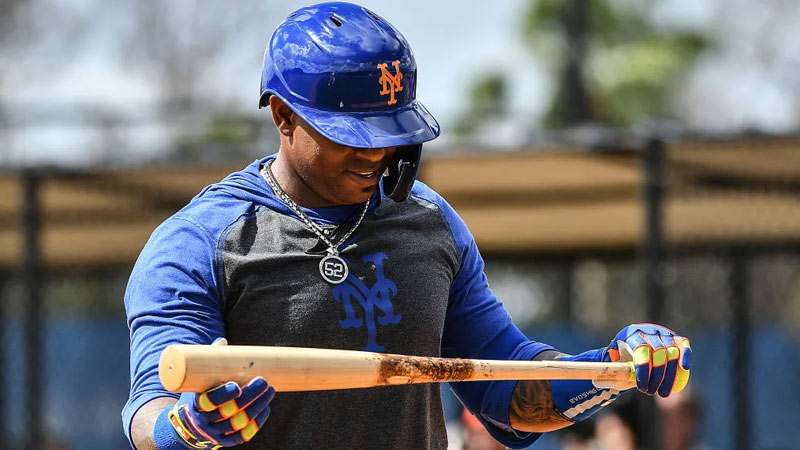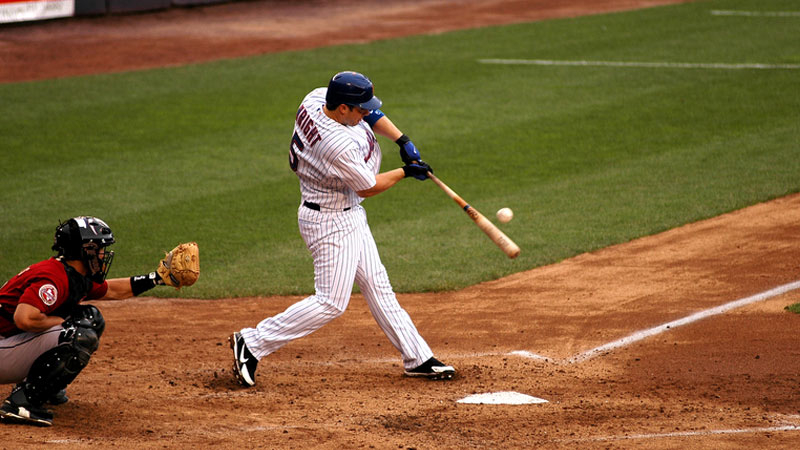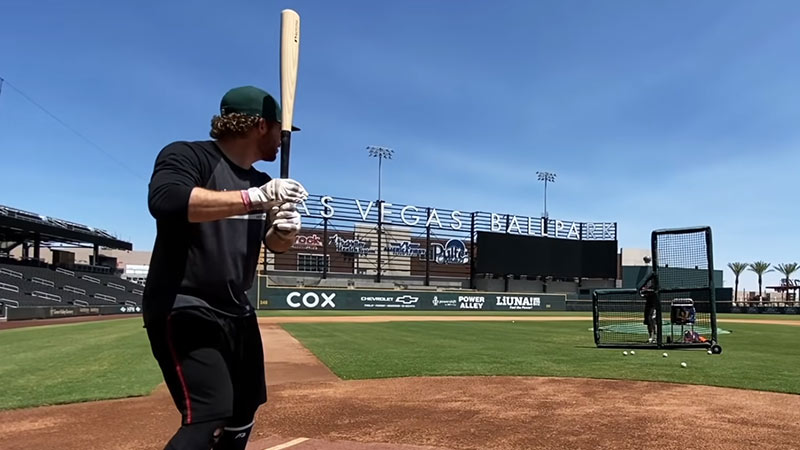The use of wooden bats in Major League Baseball (MLB) has a rich tradition that spans decades, symbolizing the essence and authenticity of America’s pastime.
While technological advancements have introduced alternative materials, wooden bats remain deeply rooted in the sport’s history and the primary equipment professional baseball players use.
This article delves into why MLB only use wooden bats, examining their use’s cultural significance, skill development, and strategic implications.
By exploring the enduring appeal of wooden bats, we can better understand their role in shaping the game and maintaining its integrity amidst evolving technological advancements.
Why Does MLB Only Use Wooden Bats?
The tradition and aesthetic appeal of wooden bats in baseball have played a significant role in shaping the sport’s identity and captivating fans for generations.
From their historical significance and preservation of authenticity to their cultural value, wooden bats embody the spirit of the game and evoke a sense of nostalgia that adds to the allure of baseball.
Historical Significance:
Wooden bats have been integral to baseball since its inception. The use of wooden bats dates back to the sport’s early days and has become deeply ingrained in its traditions.
The aesthetic appeal of wooden bats, with their elegant design and nostalgic feel, adds to the game’s allure.
Preservation Of Baseball’s Authenticity:
Using wooden bats in MLB helps preserve the authenticity and historical continuity of the sport. Baseball fans and players appreciate the connection to the game’s roots and the sense of tradition that wooden bats represent. Maintaining this link to the past adds a layer of sentimentality and reverence to the sport.
Cultural Significance:
Wooden bats hold cultural significance in baseball, symbolizing the spirit of the game and its connection to nature. The craftsmanship and craftsmanship involved in creating wooden bats also contribute to their cultural value, reflecting the dedication and artistry associated with baseball.
Performance Factors And Player Preferences
Bat performance and player preferences play a crucial role in the choice of equipment in baseball. Understanding the unique characteristics of wooden bats, such as their performance profile, skill development implications, and consistency, sheds light on why players and teams continue to embrace them in the ever-evolving landscape of the game.
Impact On The Game And Industry
The impact of wooden bats on the game and industry of baseball extends beyond gameplay itself. From economic factors that support local economies to the craftsmanship and collectible market, wooden bats carry significant weight in shaping the sport’s landscape and capturing the hearts of fans and collectors alike.
Fan Engagement And Authentic Experience
Wooden baseball bats captivate fans with their performance aspects and offer a unique and authentic experience. Through evoking nostalgia and sentimentality and adding to the game’s aesthetic appeal, wooden bats create a deep connection between fans and the sport, enhancing their overall enjoyment and passion for baseball.
Rule Consistency And Standardization
Ensuring fairness and maintaining the integrity of the game is paramount in professional baseball. Using wooden bats in MLB is a cornerstone for rule consistency and standardization, guaranteeing a level playing field and upholding the tradition and regulations developed around wooden bats throughout the sport’s history.
Future Perspectives And Evolution
Here are some future perspectives and evolution-
Technological Innovations:
Despite the longstanding tradition of wooden bats, advancements in technology and materials may influence the future of baseball equipment.
Companies continue to explore new materials and manufacturing techniques, aiming to produce bats with improved performance characteristics while maintaining safety standards.
Introducing composite materials that mimic the performance of wooden bats could lead to discussions about their implementation in professional baseball.
Balancing Tradition And Progress:

Source: sportscasting.com
As technology progresses, it is essential to balance preserving the tradition of wooden bats and embracing innovations.
Any potential shift to alternative materials would require careful consideration of the impact on the game, player safety, and the cultural significance attached to wooden bats.
The decision-making process should involve input from players, coaches, officials, and fans to ensure the integrity and authenticity of baseball are upheld.
Embracing Diversity:
While wooden bats remain the norm in professional baseball, there is room for diversity and experimentation in other leagues and levels of play.
Amateur and youth leagues often allow the use of metal or composite bats, providing players with different experiences and helping them develop their skills.
Embracing this diversity allows for a broader appreciation of the sport and encourages innovation and growth within the baseball community.
What Are The Pros Of Using A Wooden Bat For Baseball?
Wooden bats offer several advantages that contribute to their enduring popularity in MLB. These pros include:
Tradition and Aesthetic Appeal:
The use of wooden bats adds to the historical charm and nostalgic aspect of the game. It maintains a connection to the roots of baseball and carries a sense of authenticity that fans and players appreciate.
Hitting Skill Development:
Wooden bats demand higher skill and precision due to their narrower sweet spot and less forgiving nature than metal or composite bats. Hitters who excel with wooden bats are often perceived as more skilled, enhancing the game’s artistry.
Safety Considerations:
Wooden bats are less likely to cause severe injuries on impact than metal or composite alternatives. Due to their construction and natural material, they tend to splinter or break rather than shatter, reducing the risk of dangerous flying debris.
Balanced Performance:
Wooden bats provide more consistent performance throughout their lifespan. They do not feature the “trampoline effect” seen in metal or composite bats, which can result in longer distances for hit balls. This consistency ensures fair competition and maintains a level playing field for all players.
What Type Of Wood Are MLB Bats Made Of?

Source: make-shots.com
MLB bats are predominantly made from three types of wood: maple, ash, and birch. Each wood species offers distinct characteristics that influence a player’s bat choice:
Maple:
Maple bats have gained popularity recently due to their hardness and durability. They are less prone to breaking and provide a dense hitting surface. Many power hitters prefer maple bats because they can generate greater exit velocity and carry the ball farther.
Ash:
Ash bats have been a traditional choice in baseball for decades. They are known for their flexibility, lightweight nature, and forgiving feel on contact. Ash bats are favoured by contact hitters who rely on bat speed and value the ability to “feel” the ball when making contact.
Birch:
Birch bats combine some of the characteristics of both maple and ash. They offer a balanced approach, providing solid durability while maintaining a certain level of flexibility and responsiveness. Birch bats have gained popularity as a middle ground between the two more traditional choices.
How Heavy Are MLB Wooden Baseball Bats?
There are several factors to consider regarding the weight of MLB wooden baseball bats. While MLB regulations specify that bats must not exceed 33 ounces (935 grams) in weight, players have preferences based on their hitting styles and physical abilities.
Here are some key points regarding the significance of MLB wooden bats:
Player Preferences:
Every player has a unique hitting style, and the bat’s weight can significantly impact their performance. Some players prefer lighter bats, while others opt for slightly heavier ones. The choice of weight depends on factors such as strength, swing speed, and personal comfort.
Power Hitters:
Power hitters, known for their ability to hit the ball with great force, often lean towards using slightly heavier bats. The additional weight helps them generate momentum and transfer incredible energy into the ball upon contact. A heavier bat can increase power and distance when connecting with the ball.
Contact Hitters:
Contact hitters, who focus on making consistent contact with the ball rather than hitting for power, typically prefer lighter bats. Lighter bats allow for increased bat speed, enabling contact hitters to make more precise and controlled swings.
The lighter weight enhances the hitter’s ability to place the ball in desired locations, aiming for gaps or for hitting with greater accuracy.
Bat Speed:
The weight of the bat has a direct impact on bat’s speed. A lighter bat allows players to swing faster, giving them an advantage in timing and reaction to different pitches. Faster bat speed can lead to better contact and increased chances of making solid contact with the ball.
Balance and Control:
The weight distribution of a bat, known as its balance, can also influence a player’s preference. Some players prefer a bat with more weight concentrated towards the barrel, which can provide additional power. Others may opt for a more balanced bat, distributing the weight evenly throughout, delivering better control during the swing.
League Regulations:
While MLB regulations set a maximum weight limit for wooden bats at 33 ounces, individual leagues, such as Minor League Baseball or college baseball, may have different weight restrictions. Players need to adhere to the specific rules and regulations of the league they are playing in.
FAQ
Why doesn’t MLB use metal or composite bats?
MLB sticks to wooden bats to maintain the sport’s traditions, authenticity, and aesthetics. Using wooden bats adds to the charm and historical continuity of professional baseball.
Are wooden bats less durable than metal or composite bats?
Wooden bats are more susceptible to breakage compared to metal or composite bats. However, professional players often have access to high-quality wooden bats and techniques to reinforce them, ensuring durability during gameplay.
Do wooden bats offer a disadvantage in terms of hitting performance? Wooden bats provide a different performance profile compared to metal or composite bats. While they may not give the same “pop” or trampoline effect, wooden bats reward players with exceptional skill and technique, contributing to the strategic nature of the game.
Can players still hit home runs with wooden bats?
Absolutely. While wooden bats may require more skill and precision to generate power, professional baseball players are adept at hitting home runs with wooden bats. Their expertise, strength, and technique allow them to deliver powerful hits with wooden bats.
Do college or high school baseball leagues also use wooden bats?
While professional baseball exclusively uses wooden bats, college and high school baseball leagues often allow the use of metal or composite bats. This decision is based on cost, player development, and safety considerations specific to each club.
Conclusion
Using wooden bats in Major League Baseball is deeply rooted in tradition, aesthetics, and performance factors. It preserves the authenticity of the sport, enhances skill development, and provides consistency in player evaluation.
Additionally, wooden bats contribute to the game’s safety by reducing batted ball speeds and minimizing the risk of catastrophic failures.
While alternative bat materials have their advantages, the continued use of wooden bats in MLB ensures a connection to the game’s heritage and maintains the unique character of baseball.







